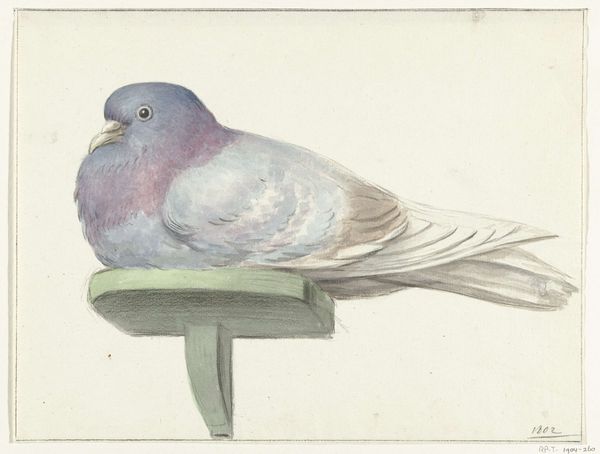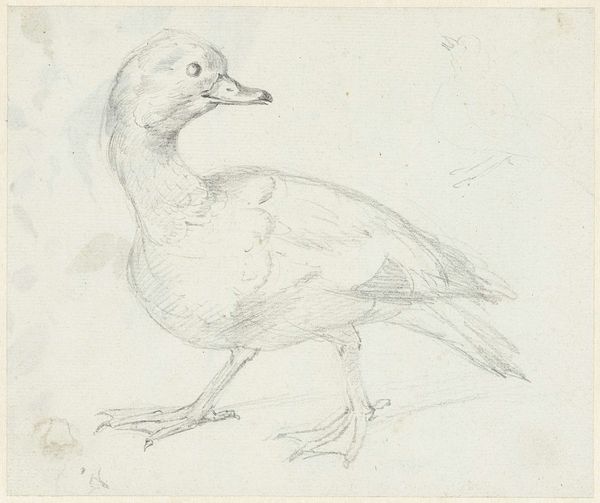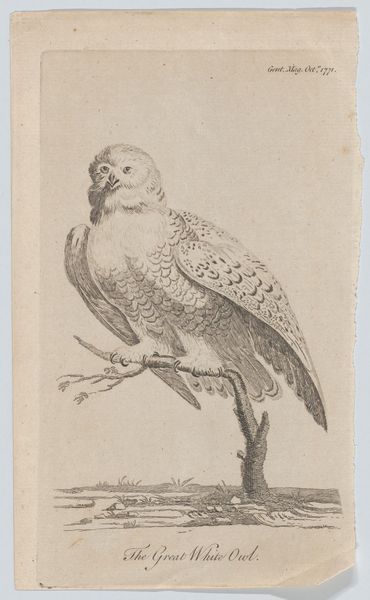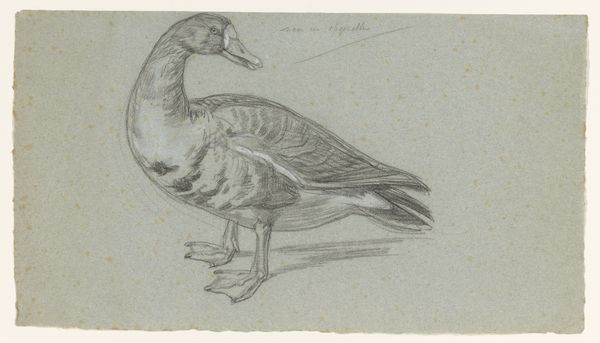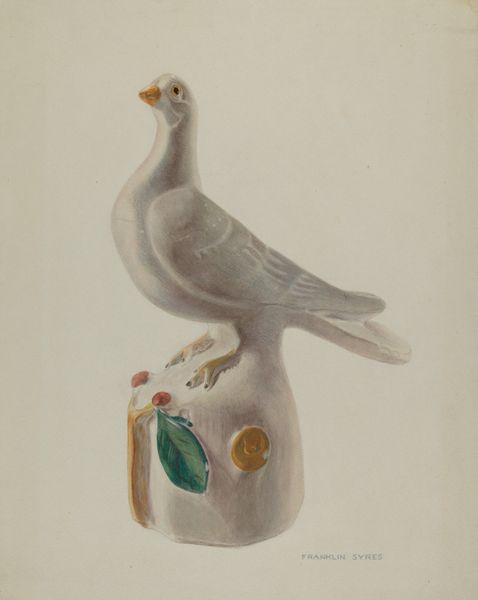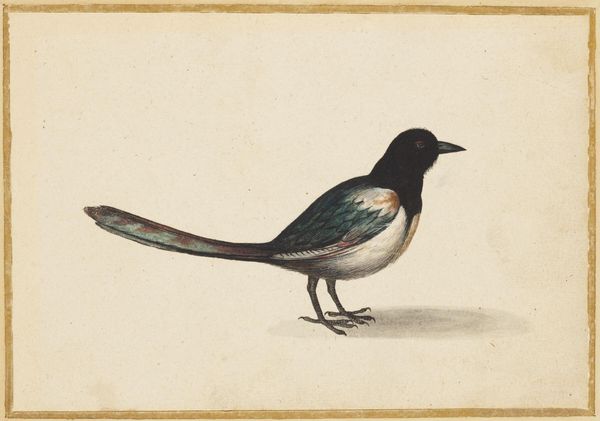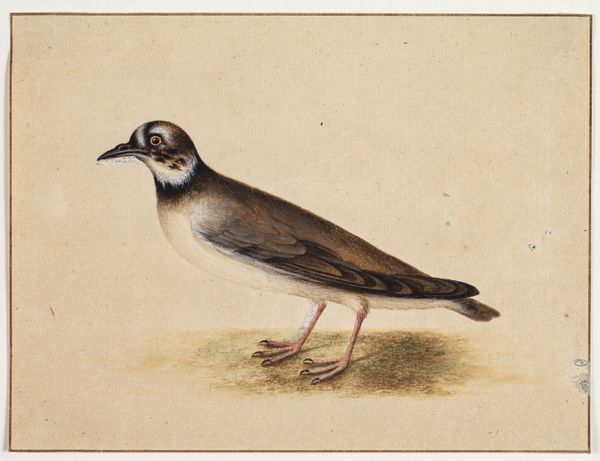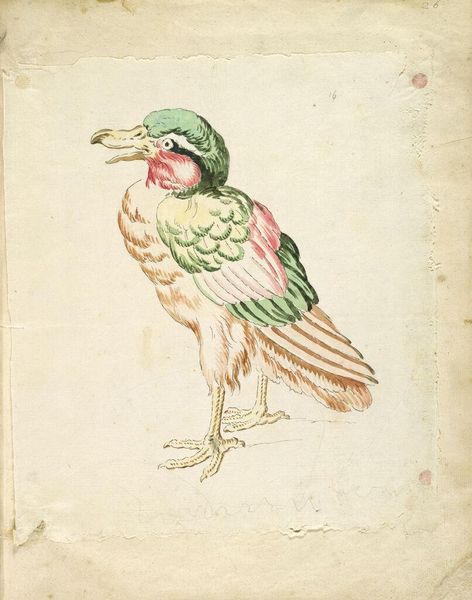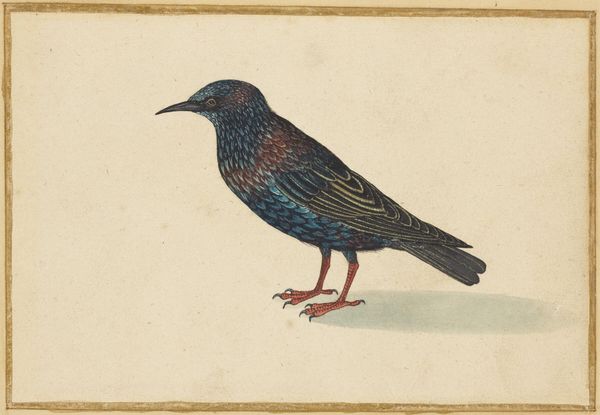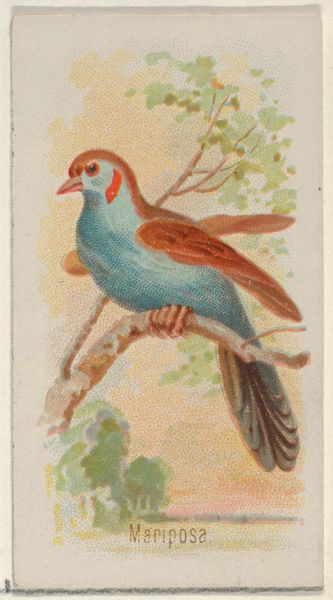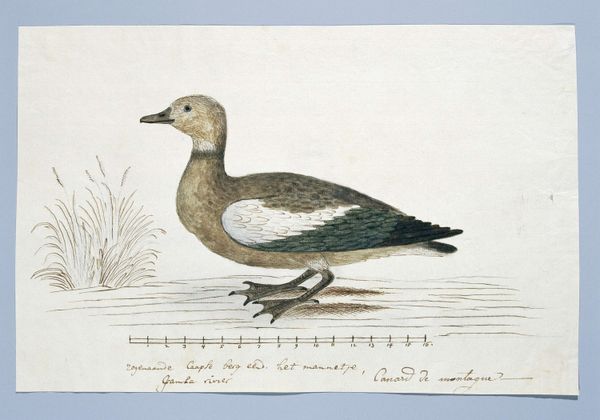
drawing, watercolor, pencil
#
drawing
#
landscape
#
figuration
#
watercolor
#
romanticism
#
pencil
#
watercolour illustration
#
watercolor
Dimensions: 147 mm (height) x 108 mm (width) (bladmaal)
Curator: Here we have P.C. Skovgaard's "En ringdue," which translates to "A Ringdove," dating from sometime between 1817 and 1875. It’s a delicate rendering using watercolor and pencil on paper. Editor: It’s rather charming. A little melancholic, even. The soft hues and gentle lines give it a quiet, contemplative air. I find the color palette interesting; it feels a bit muted, desaturated almost. Curator: Indeed. The limited color palette focuses our attention on the subtle gradations within the blues and grays of the bird's plumage. Skovgaard masterfully employs light and shadow to suggest form. Semiotically, the ringdove in romantic era landscapes is always about a messenger, no? The bird often became linked to both war and religious beliefs, with specific types and colors. Editor: Fascinating. I would also add that, placed within its historical context, Skovgaard’s ringdove, so meticulously rendered, exists at the nexus of shifting cultural attitudes toward the natural world. Remember, the period saw growing urbanisation as well as anxieties about preserving the natural and authentic national. To put Skovgaard's natural interest in context, you could suggest this dove comes as an urgent message from the country to the city. Curator: Precisely, and the choice of medium – watercolor and pencil – is quite telling, as these allowed for a level of detail and precision ideally suited to scientific studies of this messenger of sorts. The anatomical detail is incredible and the semiotic symbolism adds many other complex meanings too. Editor: Well, on closer observation, note how the irregular edges of the paper disrupt the illusion. And doesn’t this little interruption remind us that we are not observing ‘nature’ so much as viewing Skovgaard’s construction? An interpretation offered to us for, probably, sale or dissemination? The way museums frame such natural imagery does so much work that's almost invisible. Curator: A salient point. One can't deny how Skovgaard's romantic sensibilities intersect with evolving social forces, highlighting his enduring relevance. Editor: Agreed, considering how both the artist and the cultural establishment can mediate what constitutes the nature they sell. Curator: The interplay of light, form, and symbol, along with those economic structures, provide for richer readings that enhance our understanding of Skovgaard’s oeuvre. Editor: Absolutely; I depart now with a fresh understanding of a subtle commentary, both on and off the paper.
Comments
No comments
Be the first to comment and join the conversation on the ultimate creative platform.


